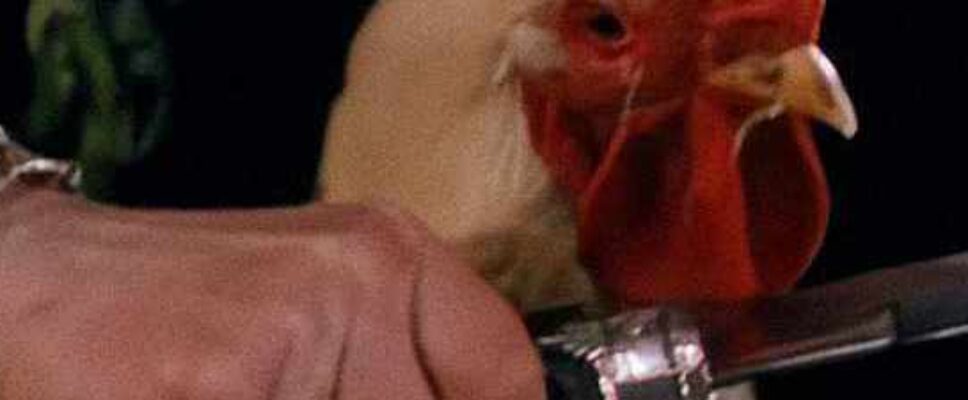Teresa Reviews “The Pale Horse” (1997)
Teresa reviews The Pale Horse (1997) and found it enjoyable so long as you never read the book.
Fidelity to text: 3 wrenches
 Bad witches transformed the leads into near unrecognizability and removed Ariadne Oliver. A good witch left most of the plot in place.
Bad witches transformed the leads into near unrecognizability and removed Ariadne Oliver. A good witch left most of the plot in place.
Quality of movie on its own: 3 wrenches
 Choppy, uneven, murky, no subtitles so poor sound really mattered. But if you can live with that, the movie works on its own terms instead of Agatha’s.
Choppy, uneven, murky, no subtitles so poor sound really mattered. But if you can live with that, the movie works on its own terms instead of Agatha’s.
Read more of Teresa’s Agatha Christie movie reviews at Peschel Press.
Also, follow Teresa’s discussion of these movies on her podcast.

The Pale Horse also uses one of Agatha’s favorite tropes which, by the way, she takes seriously although filmmakers can’t seem to.
It’s the supernatural. She wrote several short stories where the supernatural is real. In her detective fiction, the supernatural is always used as a distraction from the real, mundane crime. The practitioners are divided between those who are in it for the money and know what they’re doing is fake (here, Thyrza Grey) and those who genuinely believe (Bella the hedge-witch). In some novels, like the Tripp sisters in Dumb Witness, the believers are played for laughs. There’s also a small, in-between contingent. They believe until their faith is tested and then either double-down or become apostates. Sybil the medium might fall into this category (as in the Marple version of The Pale Horse) but we don’t know. Agatha doesn’t say and this script never shows the witches again after they’re arrested.
Where Hollywood falls down — perhaps because they can’t cope with non-atheists! — is taking the serious people seriously. No matter what the practitioner secretly believes, the trappings of ritual look the same. The intent is different. How can that be shown? Only by what the script, director, and cinematographer show, which isn’t easy. It’s much easier to pan across murky jars, shrunken heads, and gyrating half-naked women then it is to show hours of prayer, purification rituals (including fasting), and more hours spent carefully chalking mystic symbols on the floor.
And so it proves here. We get the obligatory shots of mystic, badly lit objects and nothing of how Bella, the true believer, prays and purifies beforehand. We also get Mark’s reaction. He’s taken aback and repelled by the theatricality.
Mark Easterbrook got a major rewrite. In print, he’s a cultured, well-educated, well-connected scholar of India’s Mughal Empire (1526-1857). That’s one reason he has such a hard time buying Thyrza Grey and her witchy partners.
Here, he’s shapeshifted into an ill-mannered, bad-boy sculptor in a leather jacket. He’s rude to his upper-class date, Hermia, even after she bails him out of jail for suspected murder.

Wait. What? Wasn’t Detective-Inspector Lejeune a clever, imaginative copper working closely with Mark while performing all the plodding, behind-the-scenes, boring investigative work? Not here. This Lejeune is a caricature of PC Plod. Dull, slow, incapable of original thought, and instantly suspicious of long-haired, leather-clad, motorcycle-riding sculptors. It made for painful watching, knowing that Lejeune’s character had been so badly mangled when Agatha treated him with so much respect.
Fortunately, Sgt. Corrigan comes to his rescue and takes his ridiculous story seriously. Why? Because he wants a promotion and if Lejeune fails, then so does he.

Wait. What? Yep, Ginger, a fiery redhead, is magically whitewashed into a bland brunette named Kate. Thanks to Hollywood magic, movie Kate also doesn’t lose all her hair to thallium poisoning as Ginger does in the novel.

Mr. Osborne got upgraded to a doctor for no discernible reason. A pharmacist always made more sense to me. Even into the 1960s, pharmacists did much of their own compounding and drug mixtures so it’s perfectly plausible for a rogue chemist to make up poisonous mixtures instead of safe ones. The dose makes the poison, after all.
This all sounds like I loathed this movie. It also sounds like the scriptwriter and the director tore the novel to shreds. I wouldn’t say either of those things. They made something new out of Agatha’s text that was internally consistent (not a given with book to film adaptations).
The movie works on its own terms. With better editing and subtitles, it would work even better. In fact, it could have been really interesting if the director and screenwriter had rewritten more. They could have devoted time to the culture clash between upper and lower class and traditional and modern thinking. They could have spent more time on the struggle between old-fashioned belief as demonstrated by the witches and cutting-edge belief in all things scientific and progressive.
Go back to the beginning with Mark and Hermia. They’re watching a production of Macbeth. He’s bored and very underdressed for the theater.


It makes perfect sense — at that time period — for Lejeune to be suspicious of Mark. It also makes sense for Corrigan to go behind his superior’s back to help Mark. Corrigan can see the future coming and wants to get out in front of it.
Removing wealthy but slow-to-die relatives so you can inherit dates back to Hammurabi. An organization devoted to early inheritance using modern methods decked out in antiquated dress showed the clash between new and old. Even what the cast wore showed the struggle between the old and the new; Mark in his leather jacket, Kate in mini dress and tights from Mary Quant, Hermia wearing Dior and making her mother proud.
Approach this Pale Horse by wiping the original and the other adaptations from your mind and you’ll enjoy it much more.


